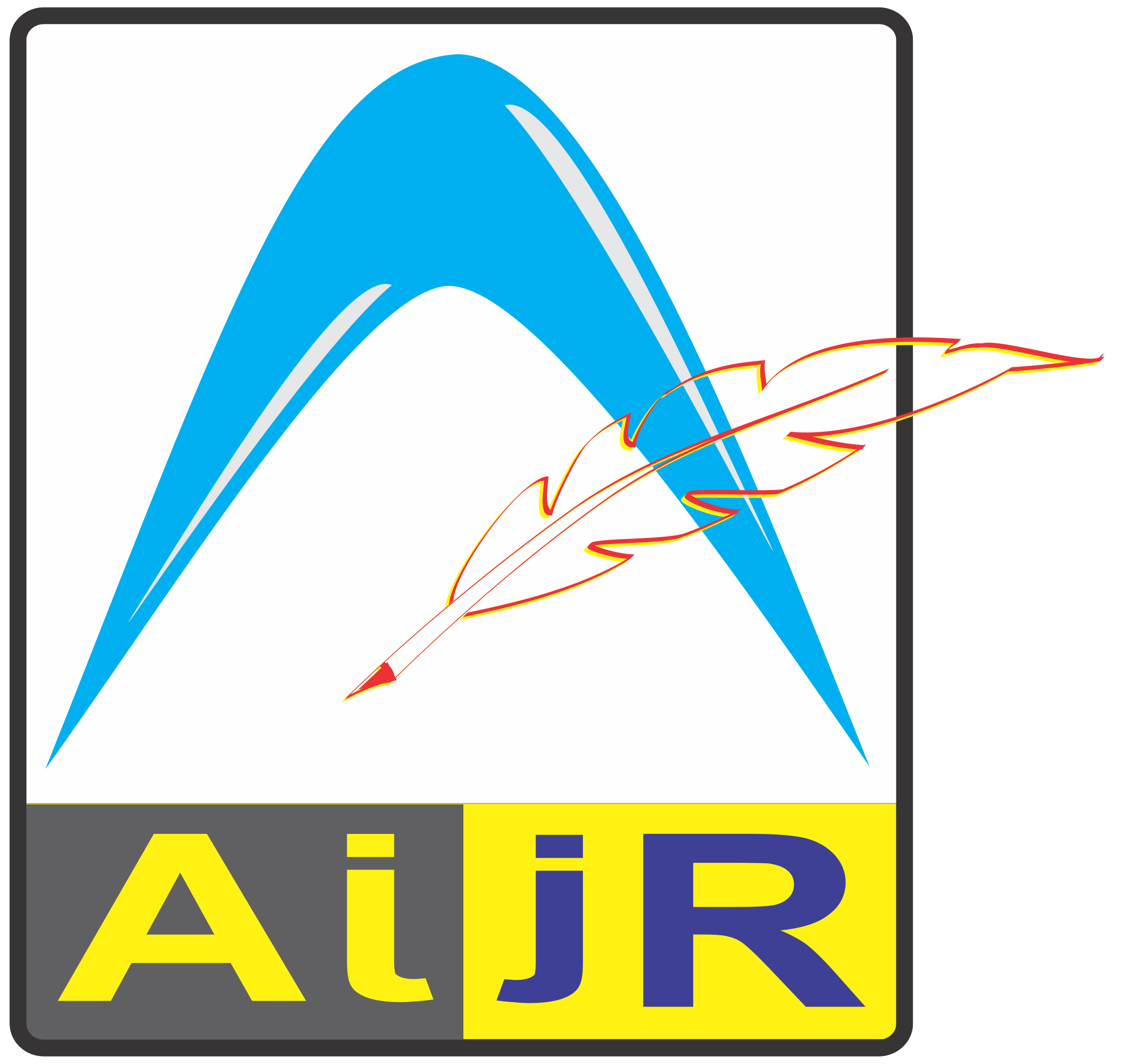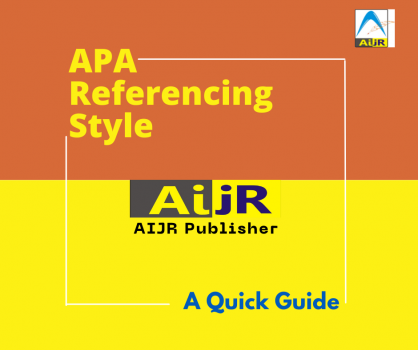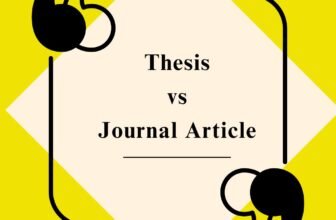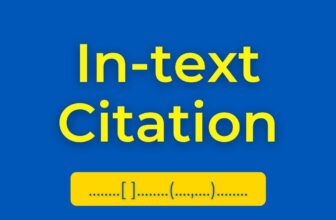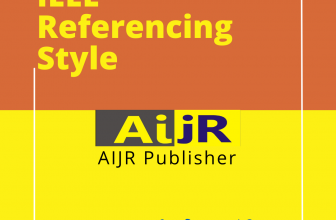Referencing is about stating the source for the appropriate acknowledgment of ideas and research work that originate from another author. It also provides evidence to support the assertions and claims in your manuscript. You should always add proper reference citations whenever you use someone else’s work even if you have paraphrased, summarised, or directly quoted their work. Proper referencing consists of 2 parts, i.e. in-text citation & reference list, and the style of referencing depends on the chosen citation format, e.g. APA, IEEE, MLA, etc. Here is the quick citation formatting guide for the standard APA referencing style.
APA referencing style is simple and effective in conveying the important information needed to present any source in the manuscript. APA Style uses the author-date citation system, in which a brief in-text citation directs readers to a full reference list entry. The source must be cited both within the text and in the reference list as well.
In-text Citation
The in-text citation in APA style appears within the body of the manuscript (or in the table & figure) and briefly identifies the cited work by its author and date of publication. This enables readers to locate the corresponding entry in the alphabetical reference list at the end of the manuscript.
In-text citations can have two formats: parenthetical and narrative.
- Parenthetical Citation is used for paraphrased text and cites the author’s name and year at the end of the cited text, as part of parentheses. The citation shall include the last name of the author without any initials or first name, followed by the year the paper was published, (Last name, Year).
- Narrative citation is used when the author’s name is incorporated into the text as part of the sentence. To cite in this style, the name of the author shall come before the text and should end with the year of the publication, Last name (year) stated that…
For in-text citation, the source is cited in a simple format by including the last name of the author without any initials or first name, followed by the year the paper was published.
Each work cited within the text must appear in the reference list, and each work in the reference list must be cited in the text (or in the tables & figures).
Reference List
A reference list gets mentioned at the end of the article and includes the alphabetical list of all cited references. The format consists of all the information about the cited article from the title to the page number. The important structure of any article includes-
WHO, (WHEN). TITLE. JOURNAL, Vol (Issue), pages. URL/DOI
WHO is the author’s name who wrote the article, WHEN is the year of the publication, TITLE is the title of the article, and JOURNAL is the name of the journal in which the article is published. It is also important to include the volume and/or issue number, URL, or DOI of the article in the citation as it provides the complete address of the article.
Last name, followed by initials, (year). Title of the article. Name of the journal/website, Volume number (Issue Number), Page numbers. URL/DOI
*Only the Journal/website’s name and volume will be in italics and nothing else.
There will be a period after year and title of the article, and the page number(s).
In reference, the items are listed in alphabetical order at the end of the manuscript.
It is important to have a proper reference list (in alphabetical order) at the end of the manuscript that includes all the cited articles.
Parenthetical Citation
- Parenthetical Citation is generally used at the end of the line for paraphrased sentences.
- In parenthetical citations, the author’s name and publication date appear in parentheses, usually at the end of the sentence (just before the period).
- When citing two authors in Parenthetical style the surname of both authors is written with the ampersand (&) in middle, followed by the year, all in parentheses; (Blank & Blank, 2005).
- To cite three or more authors, only the first author’s surname is used, followed by et al. It is important to note that et al should always end with a period and then be followed by a comma and a year. in Parenthetical it’s written as (Blank et al., 2005).
- Similarly, if there are multiple pages to be cited the page number part in the citation shall be changed to the first and last page cited. For example, (Blank, 2005, pp. 5-9) in the parenthetical style.
- There can be situations where the publication date/year can be missing or just not mentioned in the article, replace it with n.d.; for example (Blank, n.d.).
- If there are no page numbers mentioned in the article, paragraph numbers, heading, or section names can be used instead. For parenthetical style, the format will be (Blank, 2005, para. 6) and the same with the heading or section name.
- In the rare cases when there is no author mentioned, use the first two or three words of the article title; for example (The APA style, 2005)
Narrative Citation
- Narrative citation is used when the sentence starts with the author’s name in a narrative style.
- Narrative Citation includes the name of the author in a continuous narrative style. To cite, the name of the author shall come before the text and should end with the year of the publication in parentheses.
- When citing two authors in narrative style the ampersand is expanded and only the year remains in parentheses; Blank and Blank noted (2005).
- To cite three or more authors, only the first author’s surname is used, followed by et al. It can be written as Blank et al., (2005)
- Similarly, if there are multiple pages to be cited the page number part shall be written at the end of the summary or quote; Blank (2005), argued that the format depends on the style guide of the work whether it’s a blog or research paper (pp. 4-5).
- If the publication date/year is missing, In the narrative citation it can be written as Blank (n.d.).
- If there are no page numbers mentioned in the article, paragraph numbers, heading, or section names can be used instead. For narrative style, paragraph numbers will be used like this; It was stated by Blank (2005), that the format depends on the style guide of the work whether it’s a blog or research paper (para. 6), and the same with heading or section name.
- In the absence of the author’s name, use the first two or three words of the article title; for example The APA style (2005).
Block paragraph format is used when a long quotation is being used within the text which is over 40 words. The quote should be formatted in the following format:
- An indentation shall be applied with 0.5 in. from the left on the entire block
- There should be no quotation marks.
- No extra space should be given before or after the quotation.
- The entire block should be double-spaced.
For more detail on the APA citation style, please visit this link
